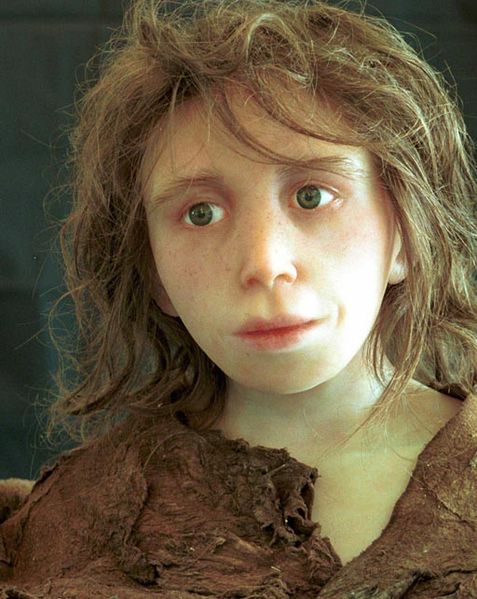
It's the 200th anniversary of Charles Darwin's birth today, so a great day for a post about human evolution. I'm in Chicago this week attending the annual meeting of the American Association for the Advancement of Science. The conference has only just started but already some great results have been presented by ancient DNA expert Svante Paabo.
He and his colleages at the Max Planck Institute for Evolutionary Anthropology and the DNA sequencing company 454 Life Sciences told us (via satellite link from Leipzig, ahead of a talk that Paabo will be giving here in Chicago on Sunday) that they have completed a rough first draft of the Neandertal genome. The Neandertals were our closest relatives, so the genome promises to offer unprecedented insights into what makes humans different from any other species.
Paabo and his colleagues had already published the sequence of DNA found in Neandertal mitochondria (organelles inside cells involved in energy production, which have their own genes) but this is the first overview of the whole genome. Overall they have sequenced 3.7 billion base pairs of DNA from six individual Neandertals at four sites across Europe, and they have managed to cover 63% of the Neandertal genome at least once. The biggest challenge was getting enough DNA from the fossils to sequence, and separating it from contaminating DNA from bacteria and modern humans. At best only 4% of the DNA extracted from the fossils came from the specimen itself, compared to around 70% for mammoths frozen in permafrost.
From the sequence they have produced, the researchers confirmed that Neandertals were much more similar to humans than to other species of ape, and that Neandertals and humans diverged around 830,000 years ago. We already know about a lot of genetic changes that are unique to humans compared to other apes, so the researchers are now keen to check whether the Neandertals had the human or ape versions of these genes. That'll help them to home in on genes that make us uniquely human.
Paabo didn't want to talk too much about specifics ahead of publising a formal paper, but he did confirm that Neandertals did not have the lactase gene that many humans have, meaning that they would not have been able to digest milk once they were weaned. But when it comes to the FOXP2 gene, known to be involved in speech and language, Neandertals had the same version as humans, which no other apes have. This doesn't prove that Neandertals could talk, as several other factors would have been required as well, but Paabo said there's no reason to assume they couldn't.
In general, the Neandertal genome is extremely similar to the human genome, so in most regions, it falls within the normal variation that you see in humans (this confirms evidence from other fields, such as the pictured reconstruction, created by researchers from the University of Zurich who used computur modelling techniques to add flesh to the bones of a specimen found in Gibraltar). But the researchers are now looking for particular areas where the Neanderthals are completely chimp-like. Such regions must have evolved in human ancestors after they split from Neandertals, and could contain genes that make our species unique. They've already found one such region on chromosome 7, so will be looking more closely at the individual genes there. Overall, it sounds as though there's going to be a flood of interesting data coming out of this project over the next few months.
Most of the reporters at the press conference wanted to know about the evidence for inbreeding between humans and Neandertals. We already knew from mitochondrial DNA that Neandertals made very little or no contribution to the modern human gene pool. Now the researchers can check whether any genes from our own ancestors infiltrated the Neandertal genome. The results aren't in yet, and Paabo says this is an "open question".
Other questions involved whether we can now clone a Neandertal (no, but we could put individual Neandertal genes into other species to see what physiological effect they have) and what this tells us about Neandertal behaviour (not much - and for the time being at least, archaeological evidence is likely to tell us more about this than genes will). Negative news too about the prospects for analysing the DNA of Homo floresiensis, the little "hobbit" people who lived as recently as 13,000 years ago in Indonesia. Paabo's team visited the site where their remains were found, but have been unable to extract any DNA at all from the fossils. Excavations are ongoing there so there's still a possibility of getting some DNA, but Paabo says he fears that the site is just too hot and too humid for the DNA to have survived intact.
By the way - I haven't forgotten about last week's Whipple conference on the Antikythera mechanism - it was a fascinating day, and I'll post on it shortly.